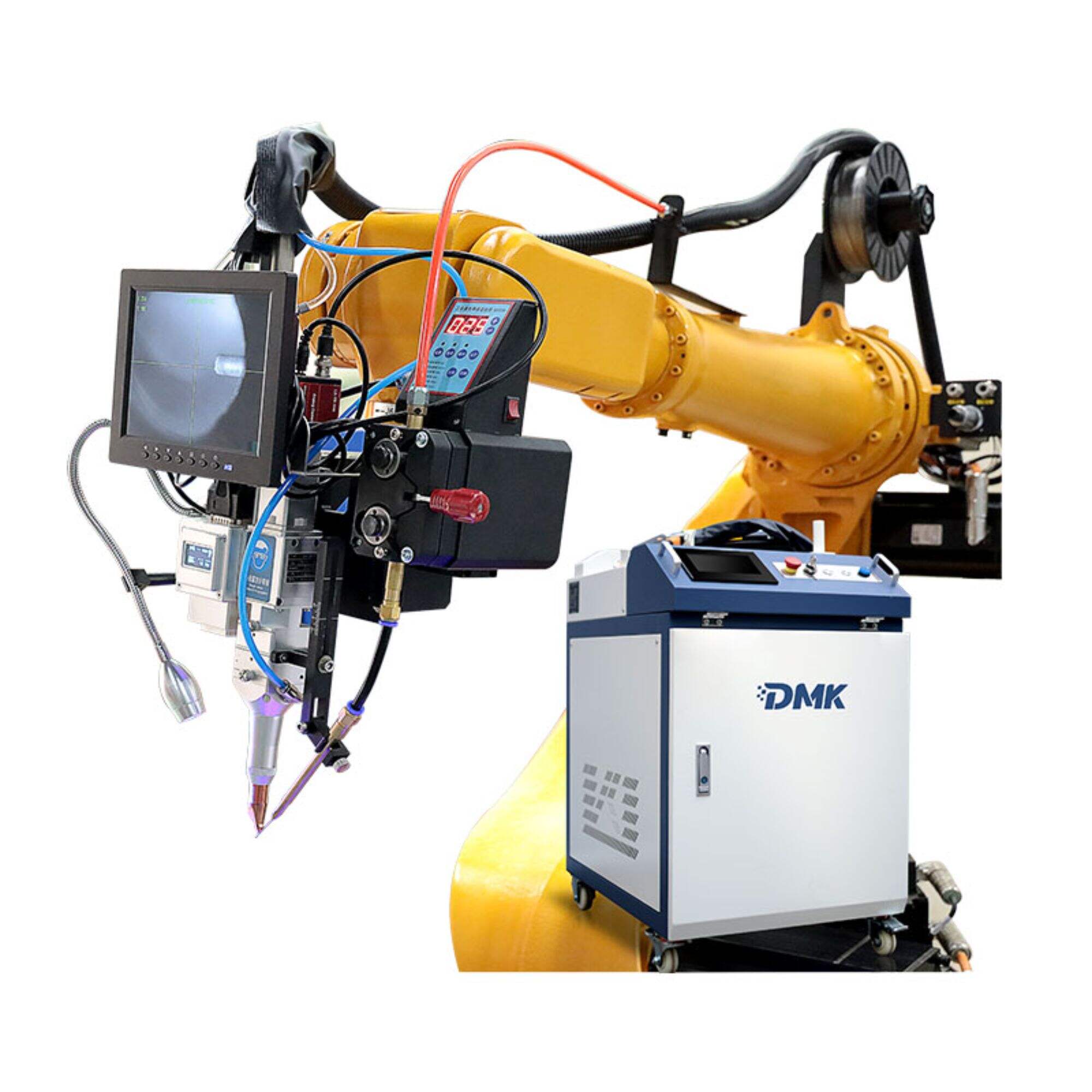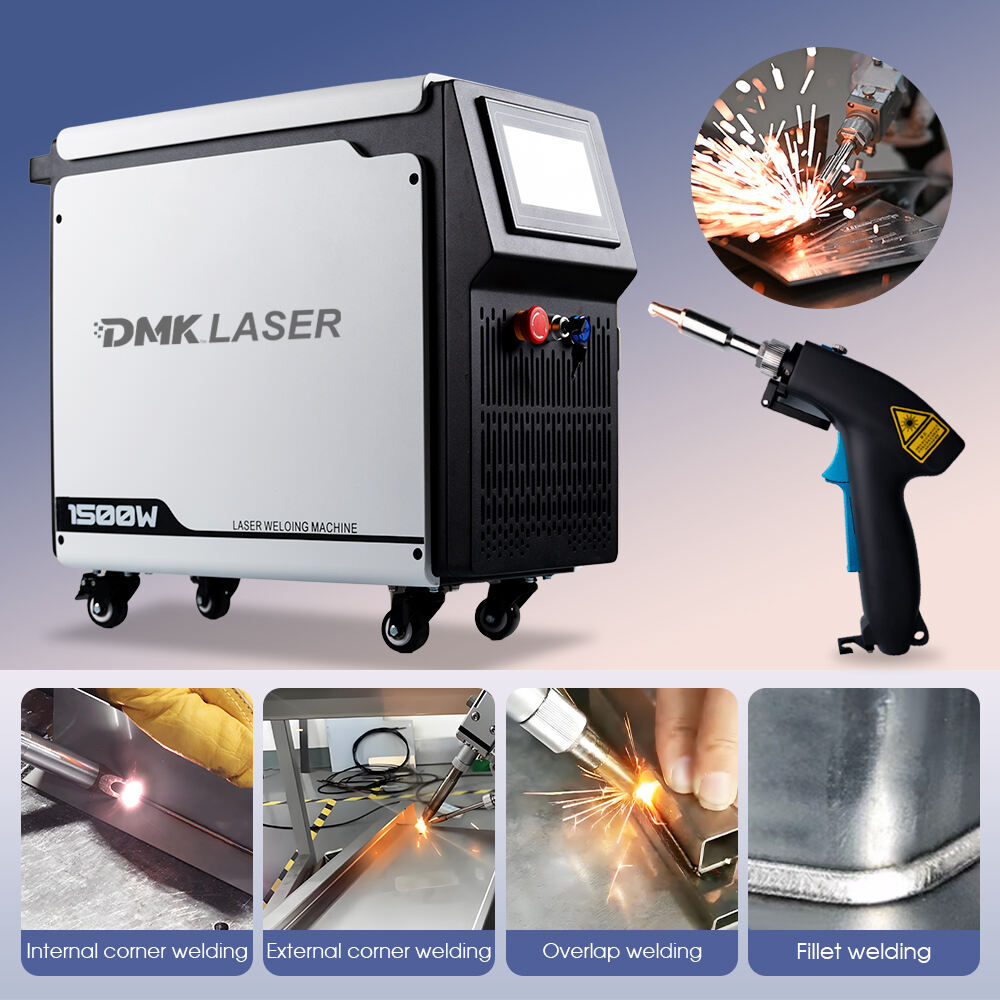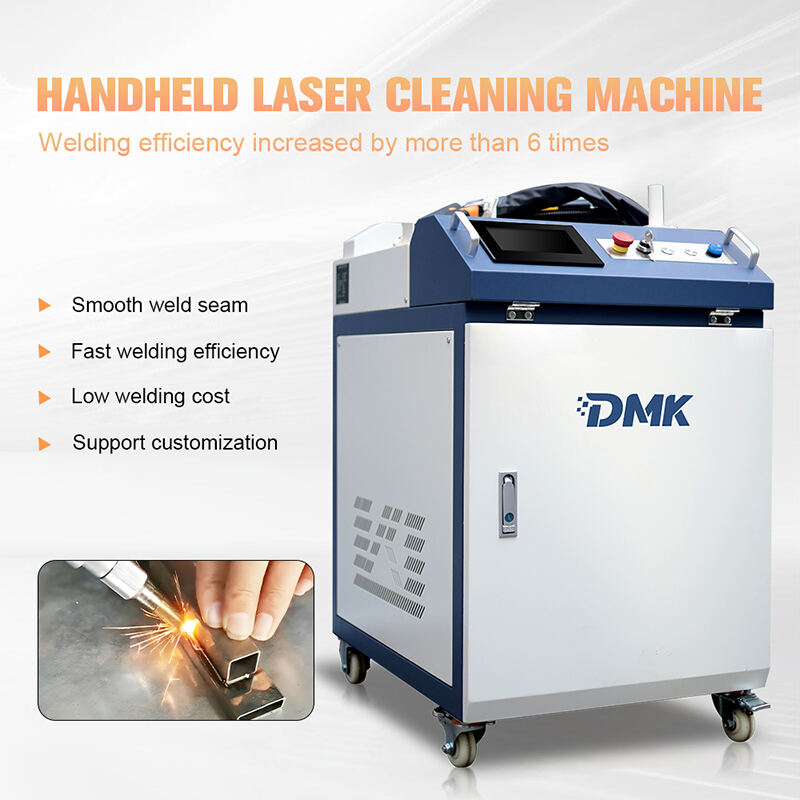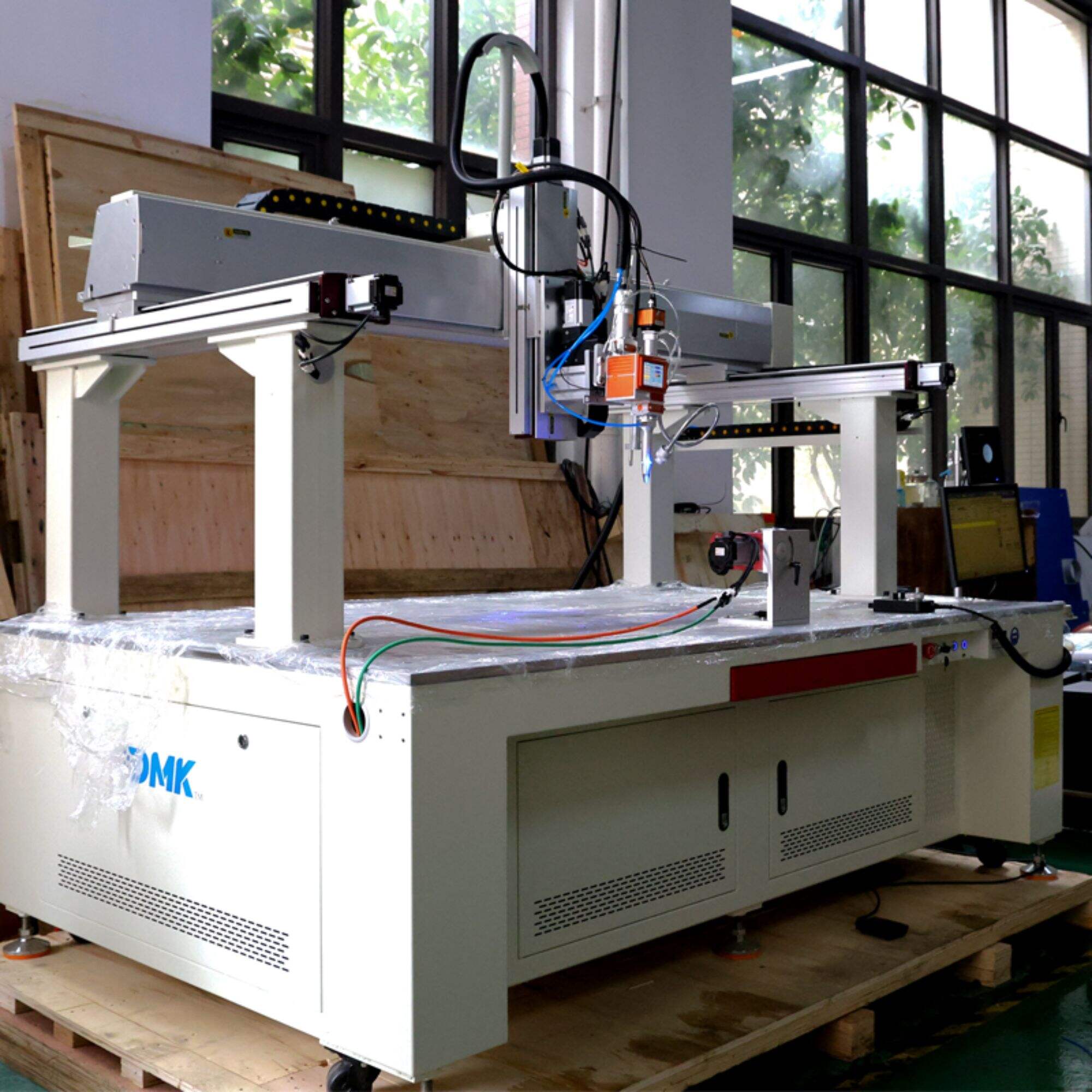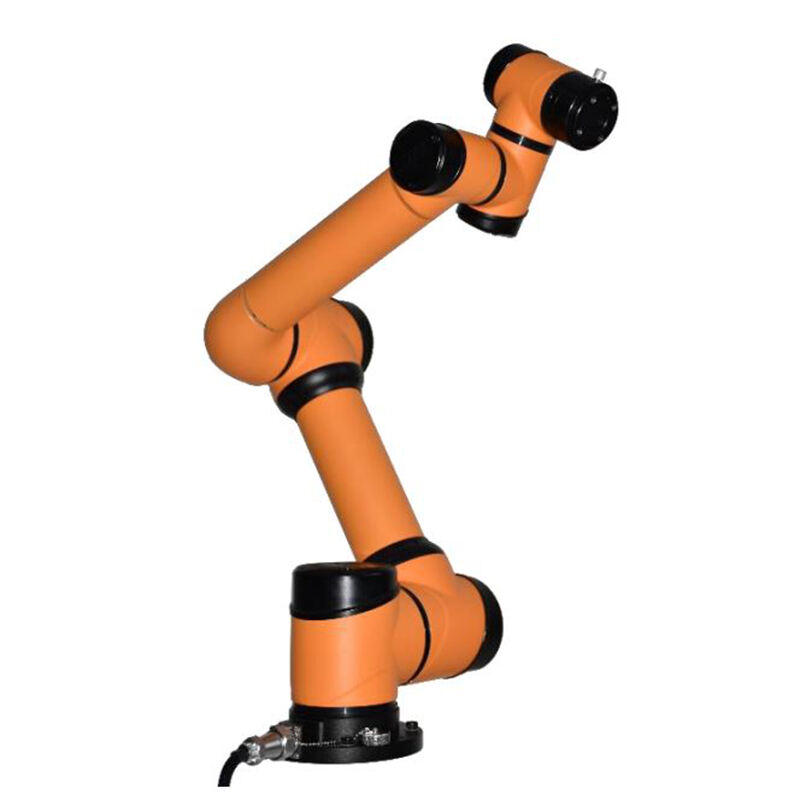Collaborative Robot Laser Welding Machine
Product Description
The collaborative robot laser welding system consists of an AUBO i10 collaborative robot and a handheld laser welding machine. It can be used for manual hand-held laser welding, or it can be clamped by a collaborative robot to realize automatic welding operations. The motion path of the collaborative robot can be operated in various ways such as drag and drop teaching, coordinate positioning, path planning, and offline programming. The visual interface is easy to learn, supports 10-level collision detection and sensor safety detection, does not require safety protection, and is safe and convenient to use.
Specifications
| Laser wavelength | 1070±10nm |
| Working mode | Continuous/Pulse |
| Recommended weld thickness | Stainless steel/carbon steel: 0.5-2mm |
| Welding seam requirements | <0.5mm |
| Targeting and positioning | Red light positioning |
| Operating Voltage | AC220V |
| Optional power | 1000W-2000W |
| Appearance size | 1105*720*1005mm |
| Self-weight | 22kg |
| Working radius | 819mm |
| Load | 7kg |
| Repetition accuracy | ±0.03mm |
-
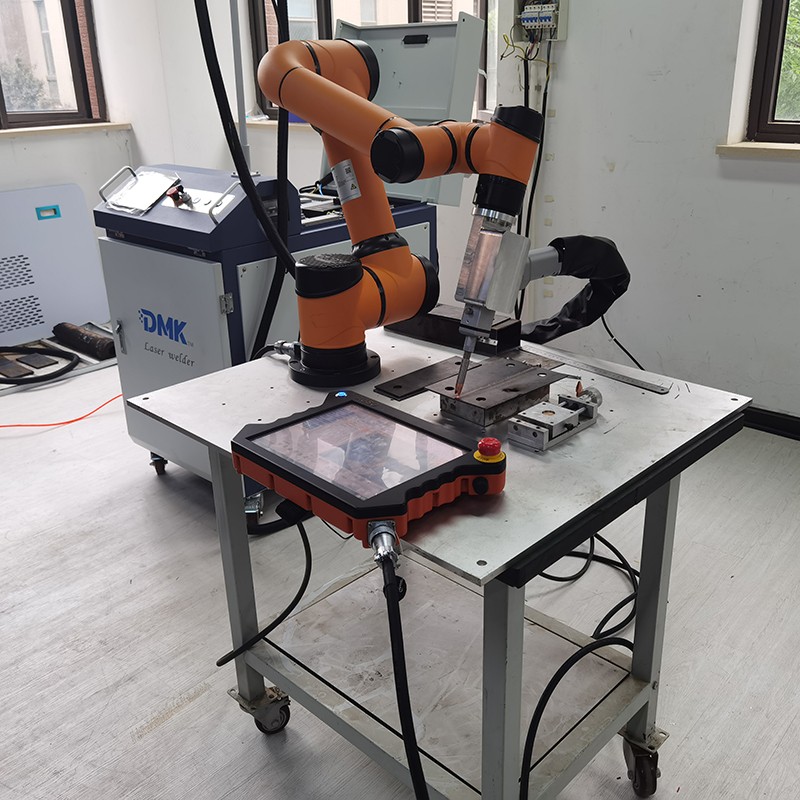
Collaborative robot laser welding machine
-
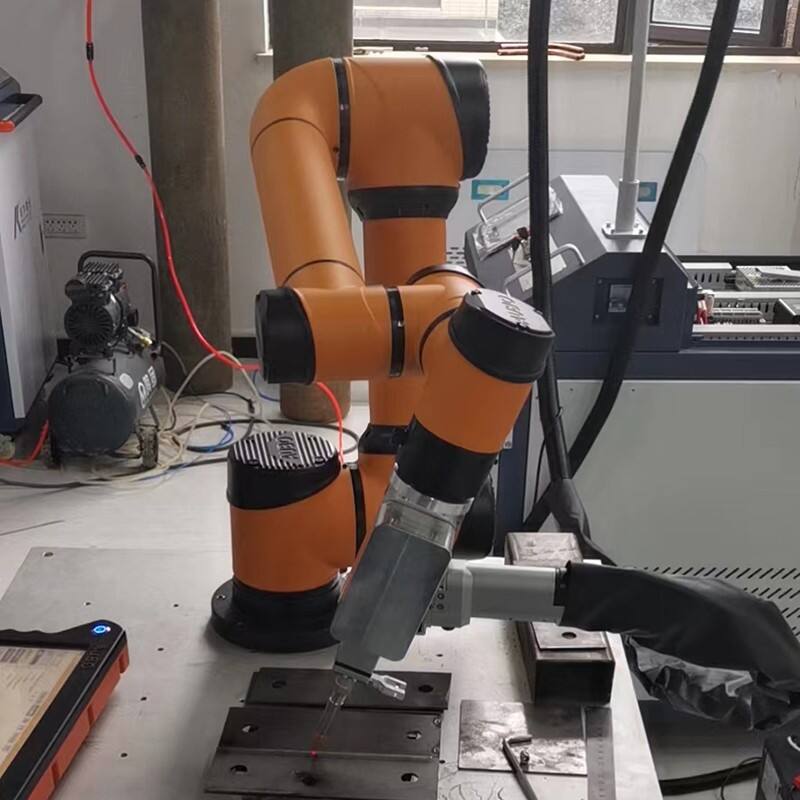
Collaborative robot laser welding machine
-
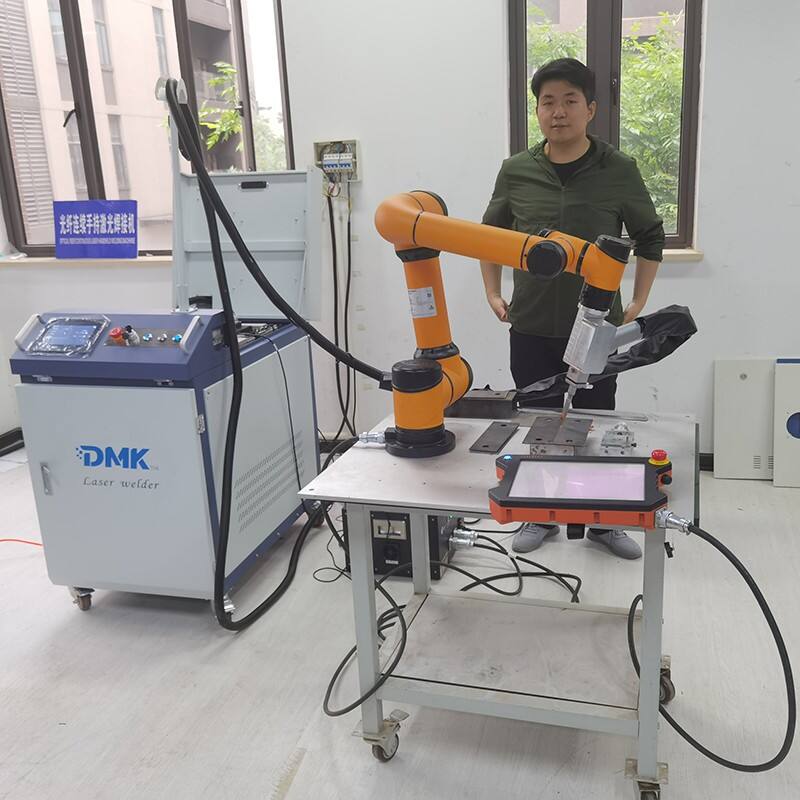
Collaborative robot laser welding machine
Quick Detail
For example:
A Small beam spot, exponentially improve processing accuracy. The heat affected zone is extremely small, the quality of the weld is high, not easy to produce shrinkage, deformation, embrittlement and thermal cracking and other thermal side effects, the laser welding pool purification effect, can purify the weld metal, the mechanical properties of the weld is equal to or better than the parent material.
B enables the power and size of the laser focus to be dynamically adjusted according to processing requirements, while monitoring the process in real time, enabling a wide range of application possibilities.
C The use of fiber optic delivery lasers allows the spatial separation of the energy source and the processing equipment to be achieved without difficulty. The light energy generated by the laser can be transmitted through a very small diameter fiber to a work station at a great distance, and the welding of the workpiece can be realized by a robot.
D A laser welding robot can replace three to four resistance welding robots. If laser welding technology is fully utilized to process a body, the cost in terms of tooling investment, weld preparation, material consumption, and body sealing will be reduced by about $200, and steel utilization can be increased by 50%.
Applications
The application prospect of collaborative robotic laser welding machine is very broad, especially in manufacturing and industrial production. The following are some of the application prospects for collaborative robotic laser welding machines:
Automated production lines: Collaborative robotic laser welding machines can automate workpiece positioning and welding operations, reducing the need for manual operations. This can greatly increase the efficiency and capacity of the production line and reduce production costs.
Flexible production: The collaborative manipulator is adaptive and flexible, allowing it to accommodate workpieces of different shapes and sizes. This allows the line to handle a diverse range of products without the need to reset or change equipment, increasing the flexibility and adaptability of the line.
Improved production quality: Laser welding technology offers high precision and stability for high-quality welded connections. The application of collaborative manipulators ensures precise control of the welding path and parameters, reducing human error and thus improving production quality and consistency.
Human-machine collaboration: Collaborative manipulators can work safely and efficiently with operators. Through the use of sensors and vision systems, the manipulator senses the presence and movements of the operator and adjusts its behavior accordingly, ensuring safe human-machine collaboration.
Complex welding tasks: Collaborative robotic laser welders are capable of handling complex welding tasks such as 3-D welding and surface welding. They can precisely control the welding process based on pre-programmed paths and parameters, enabling highly complex and delicate welding operations.
Coping with labor shortages: With rising labor costs and manpower shortages, collaborative robotic laser welders can serve as an alternative solution. They can reduce reliance on human operators and provide consistent, continuous and efficient welding capabilities.
Competitive Advantage
1. Space-saving and miniaturized design;
2, change the light without dimming, simpler daily maintenance;
3、Modular design, easy to achieve functional expansion. Can realize spot welding, butt welding, stack welding, sealing welding, etc.;
4. red light focus/indication, control, focus light point small, to achieve high precision positioning;
5, with the ability to work long and stable, especially suitable for enterprises to work long hours in three shifts;
6. self-diagnosis, protection and early warning functions;
7、Provide a variety of special industry fixtures and control methods, the system is easy to achieve with the automatic production line supporting;

 EN
EN
 AR
AR CS
CS NL
NL FR
FR DE
DE IT
IT JA
JA KO
KO PL
PL PT
PT RU
RU ES
ES UK
UK TH
TH TR
TR
